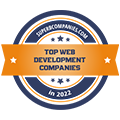In today’s data-driven world, IoT Analytics is a game-changer that enables businesses to transform data into actionable insights. By integrating real-time monitoring, predictive maintenance, customer experience optimization, and AI-driven analytics, businesses can leverage the true potential of IoT to enhance their operations and stay competitive.
The Internet of Things (IoT) revolutionizes industries by connecting millions of devices that continuously generate data. However, raw data alone is not valuable until it is processed, analyzed, and transformed into actionable insights that can drive decision-making. This is where IoT Analytics comes into play. By leveraging sophisticated analytics tools, businesses can sift through massive volumes of data, extract meaningful patterns, and use this information to make informed choices that optimize operations, enhance customer experience, and unlock new business opportunities.
In this blog, we’ll dive deep into the transformative power of IoT Analytics and how it turns overwhelming data into valuable insights.
What Is IoT Analytics?
IoT Analytics refers to applying data analysis techniques to the data produced by IoT devices. These devices, including industrial sensors to smart home gadgets, generate vast amounts of real-time information. IoT Analytics helps organizations make sense of this data, allowing them to track device performance, monitor trends, and predict future behaviors. This ability to analyze and interpret data in real time gives IoT systems their true potential.

Turning Data into Actionable Insights
The vast amount of data generated by IoT devices can be overwhelming, but IoT Analytics helps companies extract actionable insights. Here’s how:
-
Real-Time Monitoring
One of the most significant advantages of IoT Analytics is its ability to process and analyze data in real-time. For instance, manufacturing companies can monitor the condition of their equipment 24/7, identifying issues as soon as they arise. This minimizes downtime, saves costs, and increases overall operational efficiency. The actionable insight here is the ability to detect potential failures before they occur and act promptly. -
Predictive Maintenance
By utilizing this Analytics, businesses can take advantage of predictive maintenance, reducing the need for costly repairs and unplanned downtime. Sensors can detect changes in equipment performance, which are then analyzed to predict when maintenance is required. This allows businesses to schedule repairs at the optimal time, maximizing uptime while minimizing costs. -
Improved Customer Experiences
This Analytics helps organizations understand how customers interact with products and services. Smart devices, like fitness trackers or home assistants, provide data that can be analyzed to gain insight into user preferences and habits. Companies can use this information to personalize their offerings, improve user experience, and enhance customer satisfaction. -
Enhanced Supply Chain Management
For logistics and supply chain managers, This Analytics provides real-time visibility into inventory levels, delivery times, and shipment conditions. By analyzing this data, businesses can optimize their supply chain processes, improve inventory management, and ensure timely deliveries. As a result, companies can reduce operational costs and improve service levels. -
Energy Efficiency and Sustainability
Companies can leverage these Analytics to monitor energy consumption patterns and identify inefficiencies in real-time. Whether it’s monitoring the energy usage of a smart building or tracking the performance of an entire power grid, IoT Analytics enables businesses to make data-driven decisions that reduce energy waste and support sustainability goals.
The Role of Machine Learning and AI in IoT Analytics
Artificial intelligence (AI) and machine learning (ML) are integral to the evolution of IoT Analytics. By applying AI algorithms to the data collected from IoT devices, businesses can uncover hidden patterns, predict future trends, and make more accurate decisions. Machine learning models, for example, can analyze historical data from IoT systems and use it to optimize processes without the need for human intervention.
In areas like predictive maintenance, AI and ML can learn from new data over time. This continuous learning process helps improve the accuracy of their predictions. These advancements greatly enhance the capability of IoT Analytics. They also enable businesses to stay ahead in a rapidly evolving digital landscape.
Industry Applications of IoT Analytics
IoT Analytics has broad applications across various industries:
-
Healthcare: In the healthcare industry, IoT devices can monitor patient vital signs in real-time. Analytics tools help physicians make better decisions by providing insights based on patterns in patient data.
-
Manufacturing: Manufacturers can use IoT-enabled machines to collect data and then analyze it to optimize production lines and increase equipment efficiency.
-
Retail: Retailers can use this Analytics to track consumer behavior, manage inventory, and optimize in-store experiences by understanding which products are most popular at different times.
-
Agriculture: In agriculture, This Analytics can help monitor environmental factors like soil moisture and weather conditions to optimize crop yields and improve sustainability.
Conclusion
In today’s data-driven world, IoT Analytics is a game-changer that enables businesses to transform data into actionable insights. By integrating real-time monitoring, predictive maintenance, customer experience optimization, and AI-driven analytics, businesses can leverage the true potential of IoT to enhance their operations and stay competitive.
Tanbits, which offers IoT services, helps businesses harness the power of IoT Analytics to drive innovation and efficiency.
As IoT devices continue to proliferate, companies that embrace IoT Analytics will be better positioned to make smarter decisions, deliver superior products and services, and improve their bottom line. The future of data lies in turning it into actionable insights—and IoT is the catalyst for making it happen.
BACK










